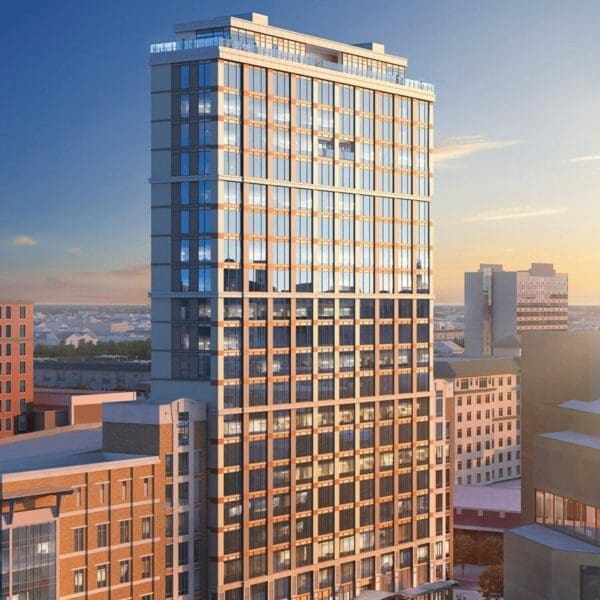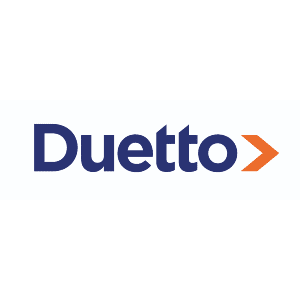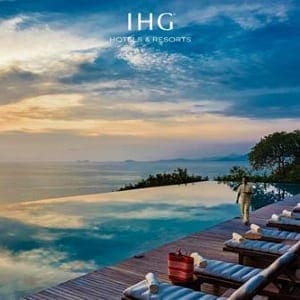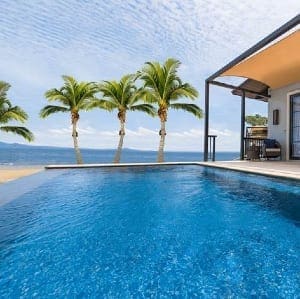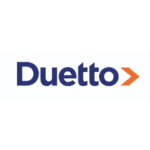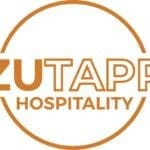In part one of our interview with Marisa Aranha, Vice President Sales & Marketing of the Hotel Jen brand, we looked at the scale and scope of rebranding 10Trader hotels in 11 months. Now we’ll take a closer look at the specific touch points this change of brand brings.
How have you altered the Food and Beverage services in the Hotel Jen offering and why?
We’ve had a lot focus on strategically rebranding different touch points with Food and Beverage. To start with, the room service menus have been simplified. What I mean by simplified, is that normally in a 4-5 star hotel, you have 10-15 pages on the menu with of a lot of items, and yet people who call room service late at night go for the classics – club sandwiches, hamburgers, etc. What we’ve done is simplified the room service menu so we now have just those signature items on them. We’re offering the same items they wanted before, but offering more value by keeping them at more affordable prices.
Some brands are moving away from room service completely – was keeping it 24/7 a conscious decision?
In many hotels it’s 24/7, in others it’s a full service offering until 11pm and then it’s down between 11-6 in the morning. We wanted to keep it 24/7 because we still have customers who arrive quite late and don’t necessarily want to go down to the restaurant -they just want a quick bite in their room and then go to bed. We didn’t want to consciously take away what our customers were used to, but we wanted to offer them something different. We think that is really important with this branding. We’re a mid-tier brand and we are purposely targeting the offering, quality and value to the mid-tier customer. In the past we did this successfully with the Traders, but it was neither here nor there, because often Shangri-La customers would go into a Traders hotel and still expect a mini Shangri-La in all fairness.
What other food and beverage concepts have you implemented?
The mini bars no longer have drinks, but we do leave a fresh fruit cup in them on arrival. They have proved popular and there is less wastage, as we found that customers like cut up fruit more than a tray of whole fruit left in the room. The fruit is free and we also leave two complimentary bottles of water in the mini bar and two more bottles of water on top of the mini bar. I understand many mid-tier brands no longer offer free bottles of water, so offering four is a point of difference for us.
We also have vending machines on most floors that offer the standard items such as noodles and other drinks.
Another initiative which is very different for the brand from a food and beverage perspective is offering an on-the-go snack when the customer finishes their breakfast. We’ve got little boxes available for when they finish their breakfast that they can fill with food – coffee, apples, and a Danish. In other hotels, the customers do that anyway – they take away food, but sometimes feel bad about it or hide it. At the end of the day, guests do pay for what they take though, because breakfasts are included with the package. Now when they finish their buffet breakfast, they can take something away if they have a busy day ahead. They might not have time to eat during the day if they’re going to a trade show, etc. It’s just a nice touch for the customer and it makes it feel like home. On-the-go is just one of our small touches that are a bit different. Other competitor brands may start to follow – but they’re not doing it at the moment!
 What are some of the other Hotel Jen touches that you feel are unique?
What are some of the other Hotel Jen touches that you feel are unique?
Our laundry service across the brand is ”wash + fold”. It’s at one price, 15 Euros, for unlimited items in the laundry bag. (Of course there’s a supplementary charge for dry cleaning.) Now if guests want to go home with a bag full of clean clothes, they can do it. Our corporate travellers who are on the road all the time appreciate it. People who are on holiday too. For example, in the Maldives, many of our guests stop over in Malé on their way home, so it’s a great opportunity to get their laundry done. We have laundry services in all the properties, but some work is outsourced. We have a 24 hour turnaround; because it’s wash and fold, it’s much easier, and can be turned around quite fast.
The other thing all Hotel Jens offer is fast, free Wi-Fi. People take it for granted, but in certain areas of the world, you have to pay a premium price. For us, the fast free Wi-Fi is a given across the board. It’s a given for Shangri-La and it’s a given for us. That has definitely given us an edge over some competitive brands who are still charging a premium price. It’s taken some hotels a bit of time to understand that it’s just something that they have to do these days.
Speaking of tech, what else have you focused on?
In addition to the Wi-Fi, we offer the PressReader service, because that gives guests access to 2500 publications and it’s an app that they can use on their own device. Our next big tech focus is giving customers access to check in with their mobile devices, and obviously the next step after that is letting customers be able to access the room with their mobile devices. That hasn’t been fully rolled out – at the moment we’re looking at different vendors and looking at how we can do this.
You say that you are social media savvy – what exactly does this mean?
Obviously social media is huge for us. In our context, we’re communicating the brand in three ways: one is PR, one is Digital Media (advertising campaigns online) and the third way is through social media. We want to attract that millennial mindset and next generation travellers are very social media savvy. We had to start from zero base – we had a Trader’s base, but that wasn’t very big.
Under the Hotel Jen brand, we had to start with zero across these three channels and every hotel under the brand also has taken on those three channels. We are all talking on a daily basis across all hotels, and each of these hotels is talking on social media across three channels. We’ve also just recently launched our Weibo and WeChat channels with the launch of the brand in China.
Social conversations for us are extremely important as they give us the opportunity to target a new customer. It was very important when we launched Ocean Gateway in Singapore because it really helped launch the brand and open up our hotels to a new customer through social media. What are the numbers today? They’re big in reach and are still growing. I don’t think we can say that we are converting to bookings in great numbers yet, but I don’t think that it’s just us, I think that’s true across the board with any hotel.
I think my colleagues in the industry would be saying the same thing – it’s extremely important for us to be talking and having discussions, but what is key in this is eventually seeing conversion and revenues. It will happen gradually, but I think it will work for mid-tier brands more than for luxury brands. The mid tier brands are talking to customers about more affordable prices and they are more price driven than value driven. We’re able to do more conversion with this target group than a luxury brand. Obviously they are not huge numbers yet – but they are growing.
We have one person in each hotel devoted to social media because that is a key channel of communication and we have a lot of focus there. I have somebody in marketing communications who works across the Shangri-La PR network in my office. There will be someone who will be totally focused on social media for the brand who starts April 1st. We need these resources because t’s time consuming to do social media properly. Even on a hotel level, you couldn’t have someone doing it for just two hours a day. If you want to get it right, you need to have someone dedicated to it because it’s not just posting – it’s how engaging the post is.
We have done a few price driven promotions across three months in Orchard Gateway and Hong Kong. It gave us some good base business, but it has to be price driven. We have learned that for mid tier brands, it’s not so much the value that triggers revenue conversion, but being price driven.
That’s what the millennial customer today is looking for – they want a deal! We’ve just launched a spring tactical promotion across the brand that we promoted though digital channels and we have already almost kicked in $300,000US across the brand in 15 days, which is for us, is an encouraging story. It’s completely driven by digital and social media. Traders had successfully used branded packages and when we launched the brand we did a lot of research on them. We looked at our competitors and saw that they also had branded packages, so we looked at what they were doing and what we could do differently. We needed to make sure that it was:
- Brand relevant
- Price driven
- Giving value.
We came up with six Jen-branded packages, one which is ”Go Local”; another is ‘Discount by Decades’ – that one is age-related. It’s the one promotion we took the most amount of flack from the hotels for, but it’s the one that has worked the best. Isn’t that funny?
These Jen packages are up 36 percent versus the Traders packages year-on- year. Not only does that show a positive response to the brand, but that they are now more relevant to what customers are looking for. They are price driven and give value around that price, which has been the key to getting these numbers in. Out of six, there’s always one that will lag behind. My revenue director and I have been looking at that package particularly and believe it’s because it’s not priced appropriately. The customer has been looking at the inclusions in it, but does not find them value and has moved on to the next package. They are not opting for things they don’t think they need.
Hotel Jen relies on the “Jen Feeling”. How do you measure/quantifying its success?
We measure our guest satisfaction scores on their stay and we measure guest satisfaction across a number of online traveller sites such as Booking.com, Expedia and also TripAdvisor. We have a company that averages the scores across the sites and to us the success of the branding comes from that. It’s on a steady upward move which is really encouraging. I think it took a couple of sharp turns immediately when we started the launch for some of a couple of the older hotels because it’s a change – and change is always daunting when it’s new.
I think the positive response to the rebranding has also been shown with the growth of customer loyalty. We have a loyalty program called “The Golden Circle”, and the guest loyalty production from these members is up 30 percent year-on-year. What we’ve done has been received with a very positive response from the guest loyalty perspective and from a brand review perspective on advisory/online sites. We have watched from the beginning of the rebranding – September/October to the month of March – and it has been a steady upward trend, with really sharp growth in March which has been very encouraging. I think it’s because we’ve been getting a lot more critical mass out and customers are starting to go from one Jen hotel to another. More branding with 10 open hotels has definitely helped.
The rebranded hotels are more at ease now and they are used to the changes implemented. They’ve had all the training, and are more knowledgeable about the touch points. Customers are beginning to embrace them too, because they understand the changes and the next time they go to Brisbane, Penang, etc. – they know what they are going to get. At the end of the day what we are trying to do is give the customer a fuss free, fun, fresh, authentic experience. You’re going to stay with a friend and your friend is Jen. That’s what we want guests to get from their stay – an easy efficiency and that Hotel Jen feeling that they potentially won’t get with…actual friends around the corner.
Click here to read Part One of our interview with Marisa Aranha.



